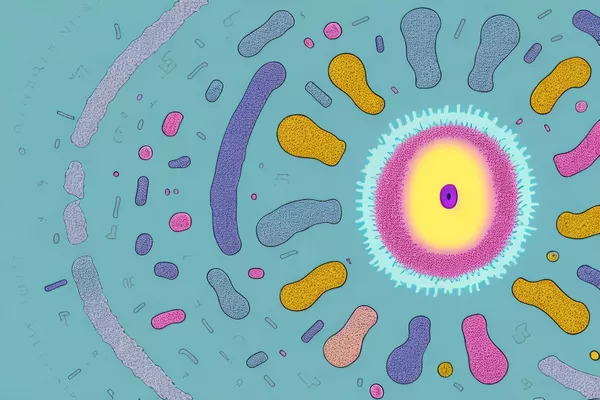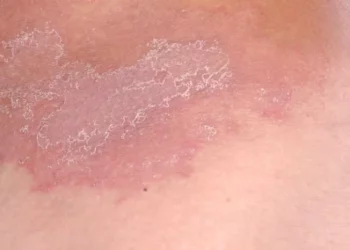Ringworm, a misleadingly named infection, is neither a worm nor a rarity. This stubborn fungal infection, caused by a group of fungi called dermatophytes, is notoriously difficult to eradicate. The reasons behind its resilience are multifaceted, involving biological, environmental, and human factors. This article explores why ringworm is so challenging to eliminate, examining its biology, the environments that facilitate its persistence, and the complications in treatment.
The Biology of Ringworm
Ringworm, or dermatophytosis, is caused by a group of fungi known as dermatophytes. These fungi, including genera like Trichophyton, Microsporum, and Epidermophyton, thrive by digesting keratin, the protein found in skin, hair, and nails. Their ability to break down keratin gives them a unique niche but also complicates efforts to eradicate them.
1. Keratin Degradation Ability
The primary reason ringworm is hard to kill is the dermatophytes’ ability to invade and digest keratinized tissues. Keratin is a tough, fibrous protein that forms the outer layer of skin and the structure of hair and nails. The fungi produce enzymes called keratinases, which break down keratin into smaller molecules that the fungi can use as nutrients. This ability allows dermatophytes to colonize the skin surface, hair follicles, and nails, making infections persistent and difficult to treat.
2. Spore Formation
Dermatophytes produce spores, a form of reproductive structure that can survive in harsh environmental conditions. These spores are highly resistant to desiccation, heat, and disinfectants. They can remain viable in the environment for months, leading to prolonged contamination of surfaces, clothing, and personal items. This resilience means that even after treatment, re-infection is a common problem unless comprehensive cleaning and disinfection are performed.
3. Biofilm Formation
Some studies suggest that dermatophytes can form biofilms, a collective of microorganisms that stick to each other and to surfaces, embedded within a self-produced matrix of extracellular polymeric substances. Biofilms protect the fungi from antifungal agents and the host’s immune response. This defensive mechanism complicates treatment, as biofilms can act as reservoirs for persistent infections, enabling fungi to re-emerge even after seemingly effective treatment.
Environmental Factors
1. Warm and Moist Environments
Ringworm thrives in warm, moist environments, making certain climates and situations more prone to outbreaks. Areas such as locker rooms, public showers, and swimming pools are notorious for harboring the fungi. The fungi can easily spread in these environments through direct contact with infected individuals or contaminated surfaces. The persistence of the fungi in these environments facilitates ongoing cycles of infection and re-infection.
2. Poor Hygiene and Sanitation
Inadequate hygiene and sanitation practices contribute significantly to the persistence of ringworm. In settings where personal hygiene is compromised or cleaning routines are insufficient, the fungi can easily spread and sustain themselves. Overcrowded living conditions, communal use of personal items, and limited access to clean facilities exacerbate the problem, making it difficult to break the cycle of infection.
SEE ALSO: Why Does Tinea Keep Coming Back?
Human Factors
1. Misdiagnosis and Self-Treatment
One of the major challenges in eradicating ringworm is the frequent misdiagnosis and inappropriate treatment. Ringworm can resemble other skin conditions such as eczema, psoriasis, or bacterial infections, leading to incorrect treatments. Over-the-counter treatments and home remedies are often used without proper medical guidance, resulting in incomplete or ineffective eradication of the fungi. This can lead to prolonged infections and increased resistance to antifungal agents.
2. Incomplete Treatment Courses
Even when correctly diagnosed, ringworm can be challenging to treat because patients often do not complete their prescribed course of antifungal medication. Symptoms may improve before the infection is fully eradicated, leading patients to discontinue treatment prematurely. This incomplete treatment can result in the survival of some fungal spores, which can then cause a recurrence of the infection.
3. Immune System Factors
The immune response to dermatophyte infections can vary widely among individuals. Some people have a more robust immune response that helps control the infection, while others may struggle to mount an effective defense. Individuals with weakened immune systems, such as those with HIV/AIDS, diabetes, or who are undergoing chemotherapy, are particularly susceptible to persistent and recurrent infections. The variability in immune response contributes to the difficulty in achieving complete eradication of the infection.
4. Resistance to Antifungal Agents
Overuse and misuse of antifungal medications have led to the emergence of resistant strains of dermatophytes. Similar to the issue of antibiotic resistance in bacteria, fungi can evolve resistance to antifungal agents, making standard treatments less effective. This resistance complicates treatment efforts and requires the development of new medications or combination therapies to successfully treat infections.
Complications in Treatment
1. Variability of Antifungal Effectiveness
Antifungal treatments vary in their effectiveness depending on the species of dermatophyte involved and the site of infection. Topical treatments, which are commonly used for skin infections, may not penetrate deeply enough to eradicate fungi in hair follicles or nails. Oral antifungal medications can be more effective for deeper infections but come with potential side effects and interactions with other medications. The variability in treatment effectiveness necessitates careful diagnosis and tailored treatment plans, often requiring medical supervision for successful outcomes.
2. Need for Comprehensive Cleaning
Effective treatment of ringworm extends beyond medication. Comprehensive cleaning and disinfection of the environment are crucial to prevent re-infection. Personal items such as clothing, bedding, and grooming tools must be thoroughly cleaned or replaced. Shared environments like gyms, schools, and households require rigorous cleaning protocols to eliminate fungal spores. Without addressing the environmental reservoir of the fungi, efforts to treat the infection in individuals can be undermined, leading to persistent cycles of infection.
Prevention and Control Strategies
Given the complexities in treating ringworm, prevention and control strategies are vital. Public health education on the importance of personal hygiene, proper diagnosis, and adherence to treatment regimens is essential. In communal settings, implementing and maintaining stringent cleaning protocols can help reduce the spread of the fungi. Awareness campaigns and health programs in high-risk areas can also play a significant role in preventing outbreaks.
1. Personal Hygiene Practices
Educating individuals on personal hygiene practices can significantly reduce the risk of infection. Regular handwashing, keeping skin dry and clean, avoiding sharing personal items, and wearing protective footwear in communal showers are simple yet effective measures. Encouraging these practices, especially in settings like schools and gyms, can help minimize the spread of ringworm.
2. Early Detection and Proper Diagnosis
Promoting early detection and proper diagnosis of ringworm is crucial. Health professionals should be trained to recognize the signs and symptoms of dermatophytosis and distinguish it from other skin conditions. Access to diagnostic tools and dermatological expertise can help ensure accurate diagnosis and appropriate treatment, reducing the risk of misdiagnosis and inappropriate treatment.
3. Comprehensive Treatment Plans
Developing comprehensive treatment plans that include both medical and environmental interventions is essential for effective eradication of ringworm. Physicians should emphasize the importance of completing the entire course of prescribed antifungal medications and provide guidance on environmental cleaning. Combining medical treatment with measures to eliminate fungal spores from the environment can improve treatment outcomes and reduce the risk of recurrence.
4. Research and Development
Ongoing research and development are needed to address the challenges of treating ringworm. Developing new antifungal agents and combination therapies can help overcome issues of resistance and improve treatment effectiveness. Research into the mechanisms of spore resistance, biofilm formation, and immune response variability can also provide insights into more effective treatment and prevention strategies.
Conclusion
Ringworm remains a persistent and challenging infection due to a combination of biological resilience, environmental persistence, and human factors. The fungi’s ability to degrade keratin, form resistant spores, and potentially create biofilms complicates eradication efforts. Environmental factors, such as warm and moist conditions, and poor hygiene practices facilitate the spread and persistence of the infection. Human factors, including misdiagnosis, incomplete treatment, and immune system variability, further complicate treatment efforts. Addressing these challenges requires a multifaceted approach that includes education, comprehensive treatment plans, and ongoing research. By understanding and addressing the complexities of ringworm, we can improve treatment outcomes and reduce the burden of this stubborn infection.
Related Topics:
























